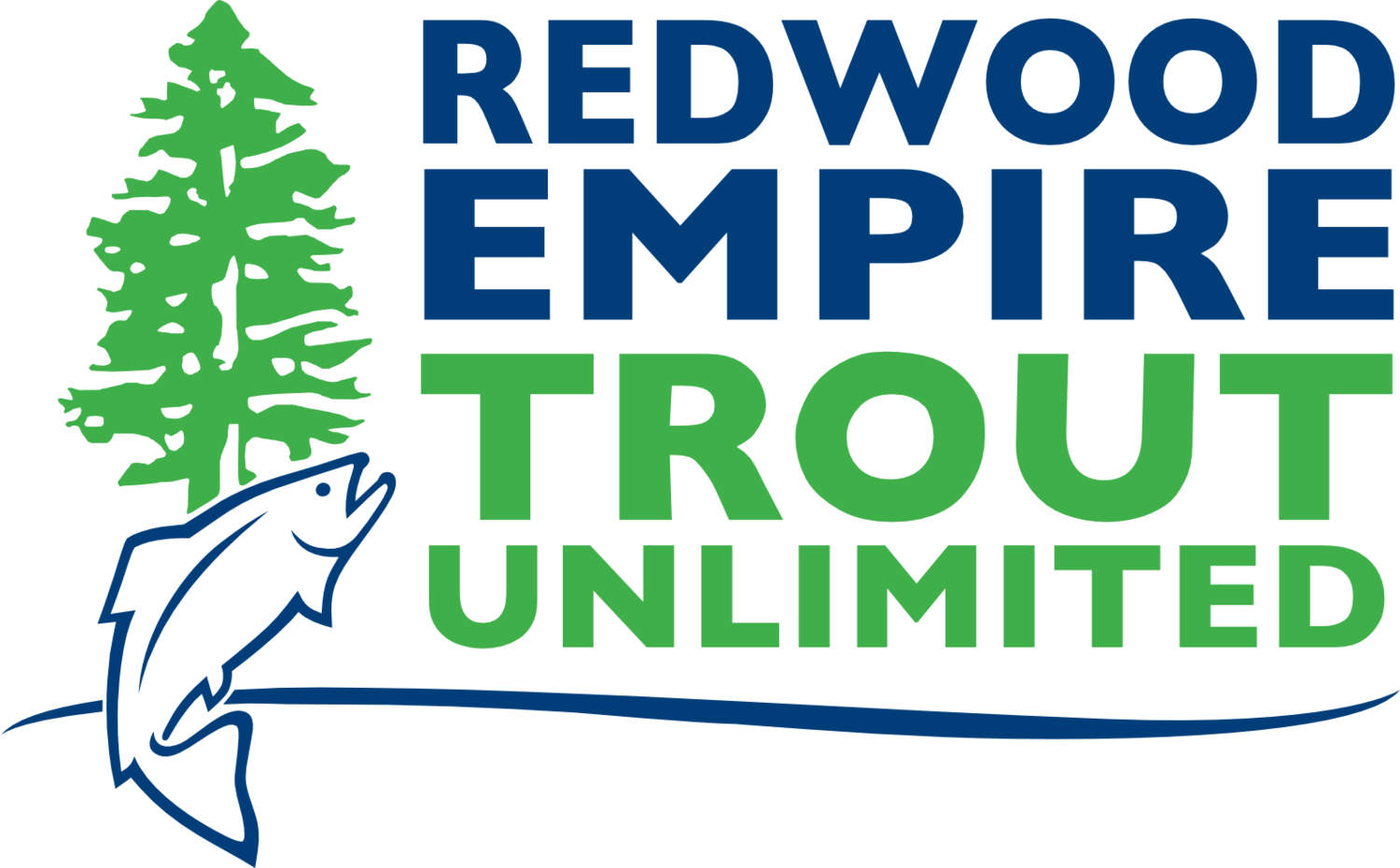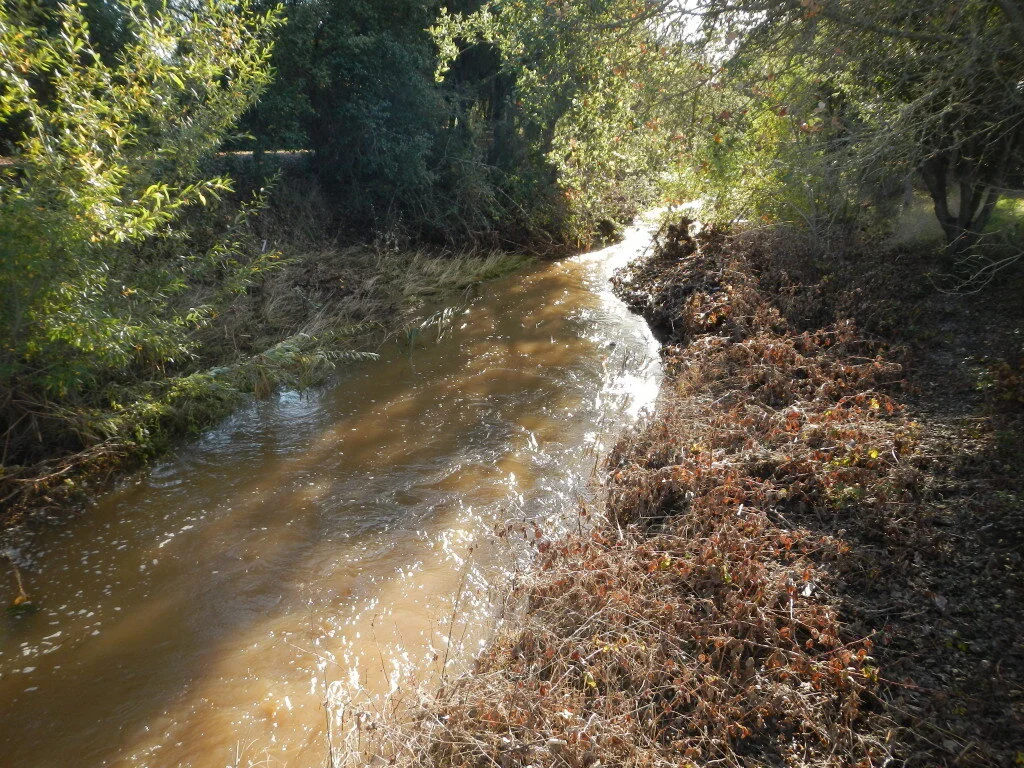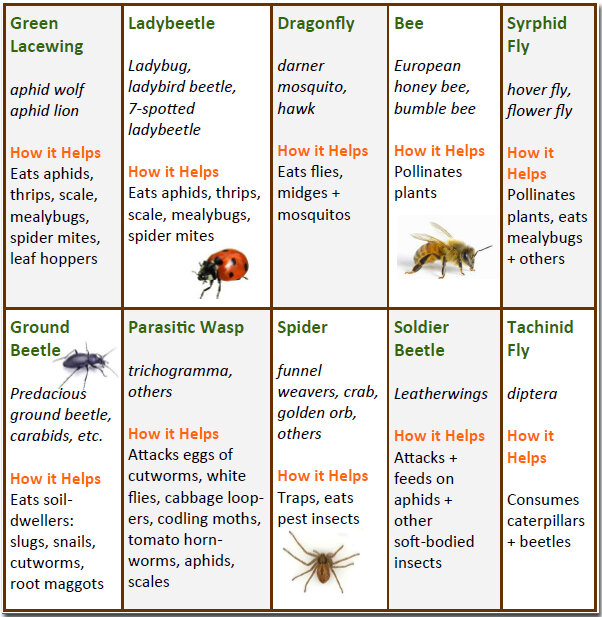Colgan Creek Water Quality
In this Section
Creek Friendly Care
Pet Management
Helping Native Fish
First Flush
Water Quality Monitoring
Colgan Creek’s main problem is thermal pollution. When water is too warm or polluted, the wildlife either dies or moves away to find a better home. Our goal is to make the water of Colgan Creek cool, clear and clean enough to support all riparian life forms, particularly trout—indicators of a healthy stream.
A Watershed Hero
To manage, you must measure. By measuring water quality in Colgan Creek, we provide valuable data for managing our resource. Water testing can make us into watershed heroes, as well. For example, in 2007, a Santa Rosa resident took water quality measurements in Colgan Creek and found that conductivity was too high. He reported it to the clean water authorities and investigators found that excessive amounts of animal waste were coming from the vicinity of the Santa Rosa Fairgrounds, entering storm drains and reaching the creek. Soon after that, the storm water system received long overdue upgrades— all because a watershed community member cared enough to monitor water quality. As Jack Williams, of Trout Unlimited said, “Citizen science is powerful.”
As we monitor water quality, we collect data which we can use to manage and protect Colgan Creek.
Watershed Heroes at Home
We can be watershed heroes by protecting water quality at home and around town when we keep toxins where they can’t reach the creek.
Store toxins properly When stored in damaged containers, toxins can leak and get carried into the storm drain. If put in the garbage, toxins can leak into the landfill and contaminate the water table.
Make certain toxin containers are intact, and stored above the ground.
Sonoma County has toxin pick-up services (not the regular garbage service) and drop-off facilities: www.recyclenow.org/toxics/house_tox_facility.asp
Creek-Friendly Car Care
You may not think of fish when you slip on your gardening gloves, but your yard work habits can have a big impact on aquatic life. For healthier creeks, replace chemical pesticides with insects that will work hard for you, helping you create an organic garden—healthier for you, too!
To keep car-dirt runoff out of storm drains, use a commercial car wash.
And since oil leaks can reach waterways via storm drains, keep a well-maintained engine, and get car oil changed professionally. Used oil goes only to a certified oil collection site.
Heroic Dog Care
Always carry a plastic bag when you walk your dog. Keep dog poop out of the creek and off the creek banks (where it gets washed into the water by rain). Dog waste can release dangerously high levels of nitrogen pollution. And perhaps we all prefer nature walks without smelling, seeing or stepping on dog droppings.
No Pet Dumping, Please! Never dump your aquarium water into the creek. And do not release animals from the pet store—fish, turtles, mice, rats, snakes, birds or other non-native animals—into the watershed. These species can transmit disease to wild fish and other native animals. www.habitattitude.net
Keeping records of water quality data enables us to sound the alarm when pollution has entered the creek. Thanks to Elsie Allen High School biology teacher Jenny Fleisher, students perform all seven of these water quality tests in Colgan Creek.
Helping Native Fish
Colgan Creek needs lower water temperature. As we restore the trees and plants that provide shade, we can expect water to gradually cool and to provide better habitat for fish such as steelhead trout.
Most fish now in Colgan Creek are non-natives that can survive in the worst warm water conditions. Improving water quality in Colgan Creek—which flows into the Laguna de Santa Rosa—will benefit salmon and trout in the Laguna and Russian River.
First Flush
First flush is the initial surface runoff of a rainstorm. During this phase, water pollution entering storm drains in areas with high proportions of impervious surfaces is typically more concentrated compared to the remainder of the storm. Consequently these high concentrations of urban runoff result in high levels of pollutants discharged from storm sewers to surface waters.
The term “first flush effect” refers to rapid changes in water quality (pollutant concentration or load) that occur after early season rains. Soil and vegetation particles wash into streams; sediments and other accumulated organic particles on the river bed are re-suspended, and dissolved substances from soil and shallow groundwater can be flushed into streams. Recent research has shown that this effect has not been observed in relatively pervious areas.
The term is often also used to address the first flood after a dry period, which is supposed to contain higher concentrations than a subsequent one. This is referred to as “first flush flood.” There are various definitions of the first flush phenomenon. Source: Wikipedia.
Scientists in the Puget Sound found that stormwater runoff is deadly to salmon. Read the news story here.
First flush monitoring of the Russian River and some of its tributaries (including Colgan Creek) was done in 2007 and 2008. Read the results in these two reports.
2007 First Flush for Russian River and tributaries.
2008 First Flush for Russian River and tributaries
Water Quality Monitoring
Temperature
Water thermometer
Colgan Creek water is generally too warm to support trout, salmon or other cold-water dependent species.
When the newly planted native trees and shrubs begin to mature and shade begins to cool the water, conditions will get better.
pH
Test strip for pH reading
Creek organisms need water with a balanced pH. In Colgan Creek, the lucky number is 7.
Each pH value < 7 indicates 10 times greater acidic. And for each number >7, the base is 10 times greater. If you find pH spikes in either direction, report it!
Dissolved oxygen
Aquatic animals rely on breathing oxygen that is dissolved in water - when the oxygen gets too low, these organisms die. In fact the entire creek can die.
Cold water that travels swiftly contains more oxygen than warm, still water, so a healthy creek needs movement.
Stagnant water has the lowest levels, and summer is the season when dissolved oxygen levels are predictably low.
Conductivity
A conductivity meter measures how well water conducts electricity.
High conductivity readings may indicate increased phosphates or nitrates. Oil contamination may lower conductivity.
Turbidity
Turbid water contains suspended particles that, in excess, can harm riparian habitat.
Nephelometer, for measuring turbidity
Turbidity can be observed with the eye, but for scientific purposes is measured in turbidity units via nephelometer (NTUs).
Phosphorus
Phosphorus boosts plant growth, making water green and cloudy. When this extra plant life dies, it loads up the creek with rotting vegetation—reducing oxygen levels in the water.
Phosphorus is measured in parts per million.
Nitrogen
Nitrogen is a naturally occurring nutrient which, in excess amounts, causes a host of problems for water bodies, including algae blooms which harm aquatic environments and are extremely difficult to control.
Nitrogen levels in water are measured in parts per million.




